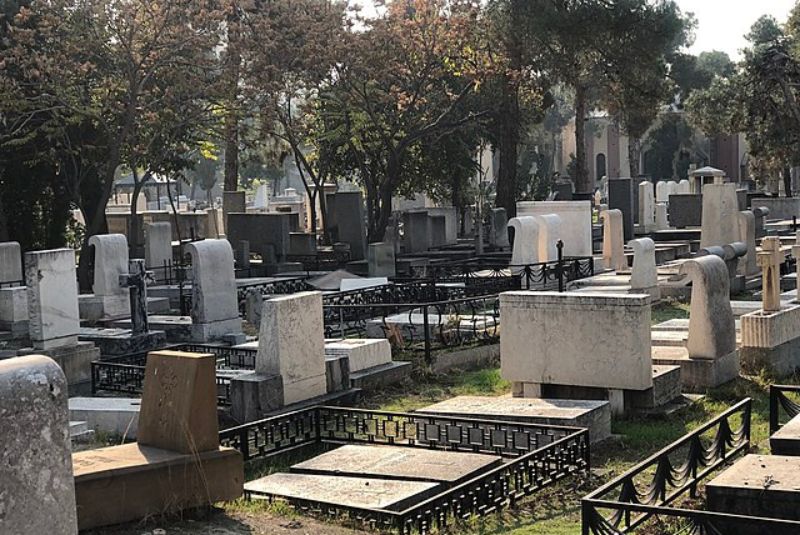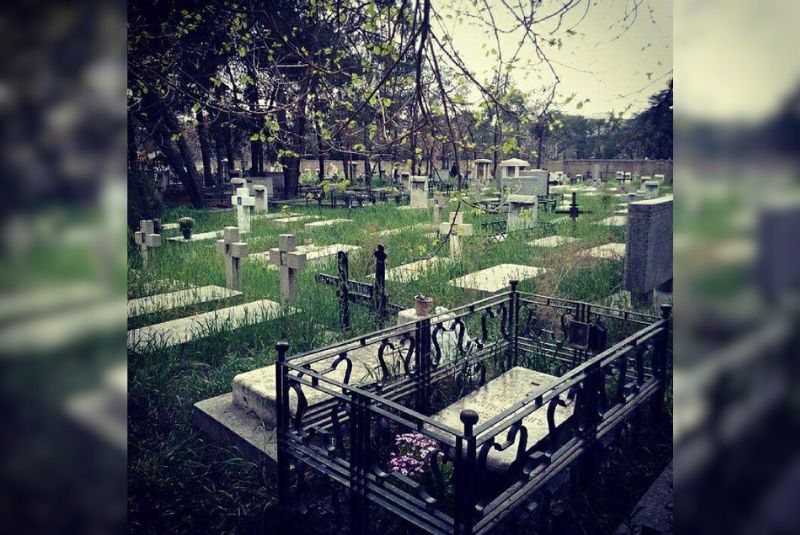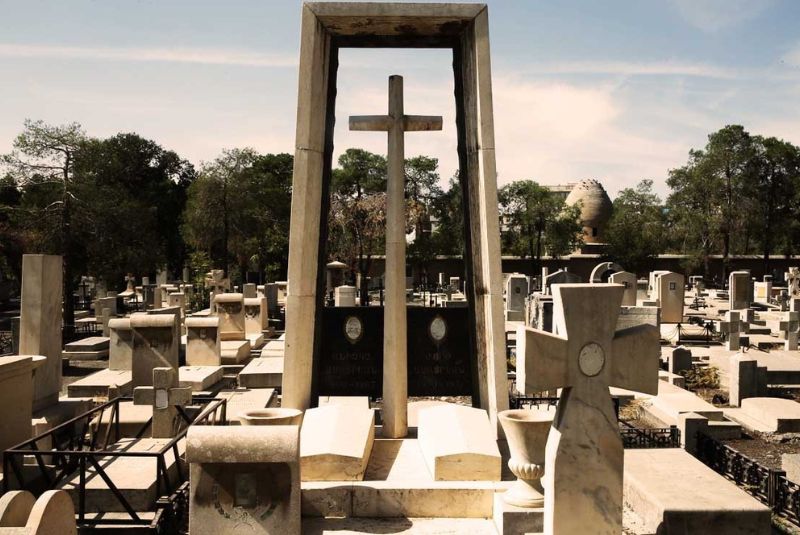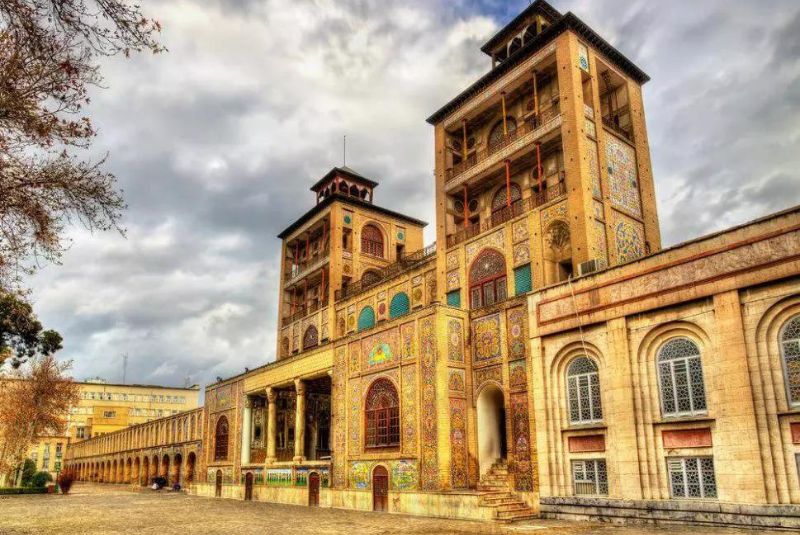Doulab Catholic Cemetery | A Guide for Visitors
The vibrant city of Tehran boasts a multitude of sights, each offering unique historical and cultural experiences.
Among these is the Doulab Catholic Cemetery, a significant landmark particularly for several Christian denominations (Armenian Apostolic, Eastern Orthodox, Roman Catholic, Armenian Catholic, and Assyrian). This historical cemetery, situated in the eastern suburbs of Tehran, Iran, holds the graves of many prominent figures from these communities.
The History of Doulab Catholic Cemetery

The Doulab Catholic Cemetery's history stretches back to the mid-19th century, marked by a significant interment. Its origins are linked to the passing of Dr. Louis André Ernest Cloquet, a young physician serving the Qajar ruler Nassereddin Shah. In 1855, Dr. Cloquet's remains were interred in a field within Tehran's Doulab district, near an existing Armenian cemetery. This designated plot would eventually become the final resting place for Catholics residing in Tehran, both foreign and local citizens. Dr. Cloquet's tomb, distinguished by its small brick cupola, stands to this day.
From their arrival in Tehran during 1862, the Lazarist priests assumed responsibility for the cemetery's upkeep. At that time, Tehran's Catholic community numbered only 87 individuals, all of whom were either foreign-born or belonged to the Chaldean Catholic Church. The year 1886 saw the acquisition of the cemetery grounds by Joseph Désiré Tholozan, a French mission physician and Armenian officer decorated with the Légion d'honneur. This purchase ensured the cemetery's continued service to Tehran's growing and increasingly diverse Catholic population.
The cemetery witnessed a significant influx of burials during World War II. In 1942, about 120 thousand Polish soldiers and civilians, liberated from Soviet captivity, reached the Iranian port of Bandar Anzali. Tasked with forming the Polish Army of the East under General Anders, many of these individuals succumbed to the hardships endured during their journey and in the immediate aftermath, perishing either upon arrival in Iran or shortly thereafter. In response to this humanitarian crisis, the Polish Embassy secured half of the cemetery's remaining land and oversaw the dignified organization of their countrymen's graves.
Further development of the cemetery site unfolded throughout the mid-20th century. The year 1943 saw the establishment of a separate cemetery for the Armenian Catholic community adjacent to the existing "Latin" section. The Chaldean Catholics followed suit in 1963, resulting in a complex encompassing five distinct areas with a total surface area of approximately 76,000 square meters . The Doulab Catholic Cemetery received recognition as a national cultural heritage site by the Iranian Cultural Heritage Organization in 2000.
The cemetery continued to serve Tehran's Catholic community throughout the latter half of the 20th century, with an average of five burials conducted annually. However, a decision made by the city administration in 1996 revoked the cemetery's authorization for further burials. Citing a policy allowing the repurposing of burial grounds after a period of forty years, the administration threatened the cemetery's future by envisioning its development for other purposes. A new location for the Catholic cemetery was designated, leaving the fate of Doulab hanging in the balance.
| Discover: Vank Cathedral | Persian & Armenian Cultural Masterpiece
The Doulab Catholic Cemetery's Burial Grounds

Spanning over 75,000 square meters, the Doulab Catholic Cemetery is a remarkable mosaic of faiths. Divided into six distinct sections, the cemetery serves as a final resting place for Armenian Apostolic, Eastern Orthodox (Russians, Georgians, and Greeks), Roman Catholic, Armenian Catholic, Assyrian, and Polish communities. The Armenian Apostolic Church holds the largest designated area, encompassing roughly 44,000 square meters, followed by the Catholics at 14,200 square meters. Eastern Orthodox (3,700 square meters) and Chaldean Assyrians occupy the remaining sections. Interestingly, within the Catholic area, nearly half the space is dedicated to Polish burials, while the remainder accommodates the graves of French, Italian, English, Czech, and German individuals.
| Read more: Famous Churches in Iran
A World War II Legacy: The Polish Section
The Doulab Catholic Cemetery holds a poignant reminder of World War II. The largest single plot within the cemetery is the resting place for 260 Polish soldiers and civilians who were deported during the war. These individuals, liberated from Soviet captivity, were tasked with forming the Polish Army of the East under General Anders. Many succumbed to the harsh conditions endured during their journey and in the immediate aftermath . A monument featuring two stone symbols engraved with eagle and cross emblems commemorates these Polish exiles, with inscriptions in Polish, French, and Farsi honoring their final resting place.

Notable Interments
The Doulab Catholic Cemetery also serves as the final resting place for several prominent figures. Evans Oganyans, the pioneering director who established Iran's first cinema and acting school, is interred here. Władysław Horodki, a renowned Polish architect, and Vartan Salakhanian, an activist of the Tudeh Party of Iran, are also among the notable names. Additionally, the cemetery holds the graves of foreign dignitaries who served in Iran during the Qajar era, including the French military musician Alfred Jean Baniste Lomer and the first police chief of Iran, Comte de Montferrat.
A more unsettling feature of the Doulab Catholic Cemetery is the tomb dedicated to 26 Italian mining engineers who perished between 1936 and 1943. The tomb's architectural design is said to create an eerie effect – visitors entering this section find themselves surrounded by what appear to be standing figures, a stark reminder of the mortality they represent.
| Suggestion: St. Nicholas Church | Tehran's Orthodox Heritage
Resting Places of Renown
The Catholic section boasts several noteworthy burials beyond the Polish plot. The tomb of Dr. Kloke, a French physician who served Mohammad Shah Qajar, is a prominent landmark within the cemetery. Other notable figures include Dr. Toluzan, the personal physician of Naseruddin Shah, Dr. Jamshid Alam who served as Mohammad Reza Pahlavi's physician, and Vladimir Gardaistaki, the architect responsible for Tehran's railway station.
A Polish Legacy
The inscription on the Polish war memorial poignantly states that these individuals were not casualties of war, but rather succumbed to typhus and exhaustion. This Polish Cemetery in Iran holds a particularly significant place in Polish history, serving as the final resting place for many who never reached their homeland.
Dolab Christian Cemetery Location and Access

The Doulab Christian Cemetery, also known as the "forbidden cemetery," presents a unique situation in Tehran, Iran. Situated on Shahid Mahalati Highway, between Shahid Rezaei and Mostafiz Streets in Tehran's 14th district, the cemetery appears more like a large garden due to the absence of recent burials.
While the cemetery is a popular attraction for its historical significance, visiting independently is currently prohibited. A family resides within the cemetery grounds and acts as guardians. If you manage to be at the entrance, you might be able to seek permission directly from them, but this is not a guaranteed method.
Joining a guided tour is the most reliable way to visit the Doulab Christian Cemetery. These tours typically handle permission procedures.
Visiting the Doulab Christian Cemetery requires advanced planning and potentially joining a tour. Be prepared for the possibility of not being granted access on an individual basis.
| Read more: Qara Kelisa, The Armenian Monastic Ensembles of Iran
Dolab Christian Cemetery Nearby Attractions

While visiting the Doulab Christian Cemetery requires some advanced planning, fret not! Tehran boasts a wealth of other historical and cultural attractions to keep you occupied. Here are a few options to consider during your wait:
- National Museum of Iran: Immerse yourself in Iran's rich history at the National Museum of Iran, housing archaeological artifacts spanning millennia. Marvel at the breathtaking Achaemenid treasures, explore ancient pottery and metalwork, and gain a deeper appreciation for Iranian art and civilization.
- Golestan Palace: Take a step back in time and explore the opulent Golestan Palace complex. Wander through the glittering throne rooms, admire the exquisite tilework and mirrorwork, and gain insights into Qajar era royalty.
- Carpet Museum of Iran: Unravel the fascinating world of Persian carpets at the Carpet Museum of Iran. This museum showcases a stunning collection of carpets from various regions of Iran, each with its unique design and weaving techniques. Learn about the symbolism and artistry woven into these magnificent textiles.
- Grand Bazaar: Experience the vibrant energy of the Grand Bazaar, a labyrinthine network of alleyways teeming with shops selling everything from spices and carpets to jewelry and handicrafts. Immerse yourself in the sights, sounds, and smells of this historic marketplace.
Final Takeaway
Tehran's Doulab Catholic Cemetery is fascinating, but visiting on your own is tricky. Joining a tour is your best bet. In the meantime, explore Tehran's many sights! The National Museum's treasures, the grandeur of Golestan Palace, or the bustling Grand Bazaar all await. History and culture fill every corner of this vibrant city!
Share your story!
Comment below and let us know about your Experience.
Your story inspires others!


Comment
Leave a Comment